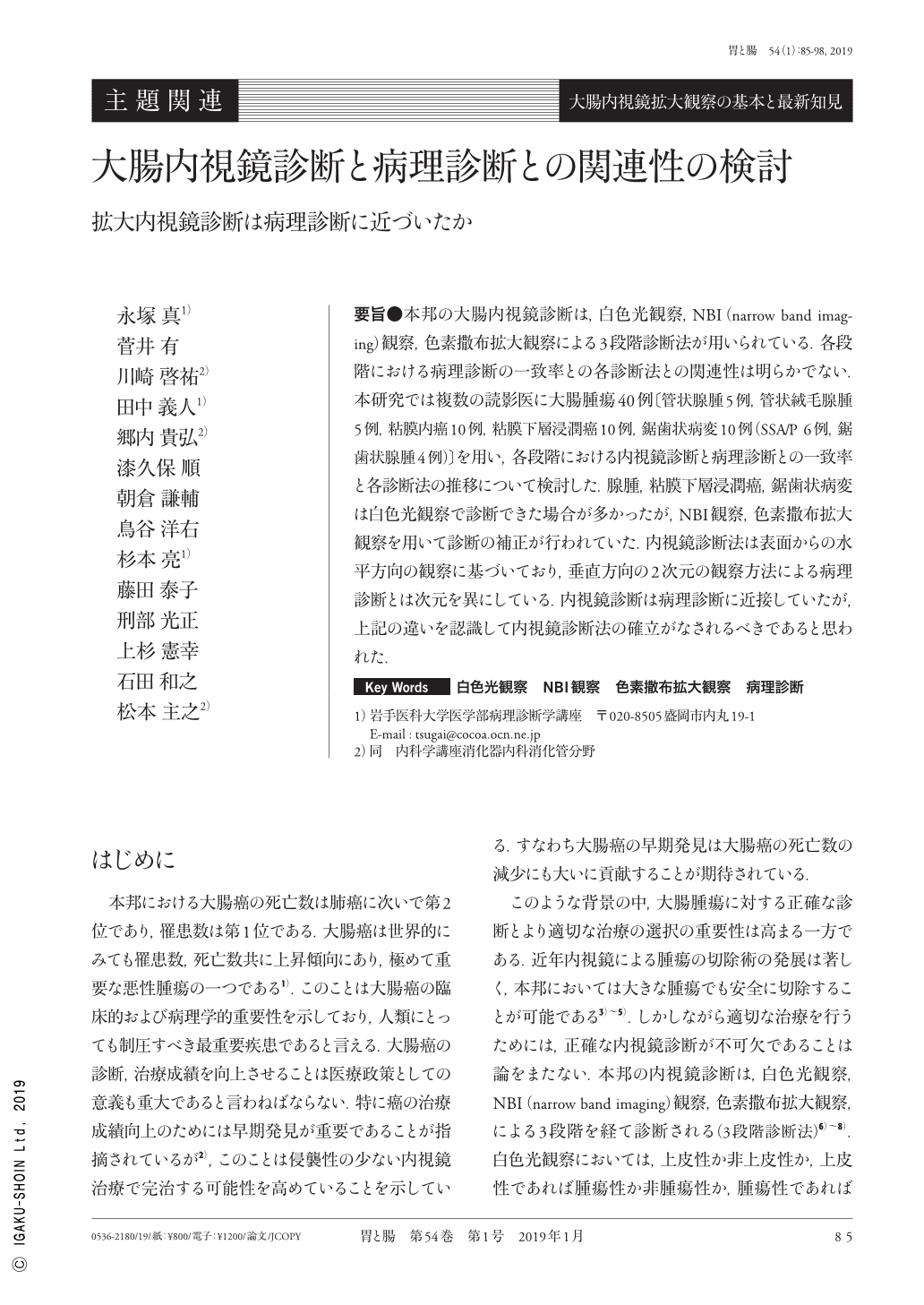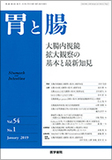Japanese
English
- 有料閲覧
- Abstract 文献概要
- 1ページ目 Look Inside
- 参考文献 Reference
- サイト内被引用 Cited by
要旨●本邦の大腸内視鏡診断は,白色光観察,NBI(narrow band imaging)観察,色素撒布拡大観察による3段階診断法が用いられている.各段階における病理診断の一致率との各診断法との関連性は明らかでない.本研究では複数の読影医に大腸腫瘍40例〔管状腺腫5例,管状絨毛腺腫5例,粘膜内癌10例,粘膜下層浸潤癌10例,鋸歯状病変10例(SSA/P 6例,鋸歯状腺腫4例)〕を用い,各段階における内視鏡診断と病理診断との一致率と各診断法の推移について検討した.腺腫,粘膜下層浸潤癌,鋸歯状病変は白色光観察で診断できた場合が多かったが,NBI観察,色素撒布拡大観察を用いて診断の補正が行われていた.内視鏡診断法は表面からの水平方向の観察に基づいており,垂直方向の2次元の観察方法による病理診断とは次元を異にしている.内視鏡診断は病理診断に近接していたが,上記の違いを認識して内視鏡診断法の確立がなされるべきであると思われた.
For colonoscopy diagnosis of colorectal tumors, a three-step diagnostic method is employed based on white light, NBI(narrow band imaging), and pigment scattering magnification.
The relevance between the concordance rate of pathological diagnosis and each diagnostic method remains unclear. In this study, we examined the concordance rate of endoscopic and pathological diagnosis of each stage and transition of 40 colorectal tumors(5 tubular adenomas, 5 tubulovillous adenomas, 10 intramucosal adenocarcinomas, 10 submucosal invasive carcinomas, 10 serrated lesions(6 sessile serrated adenoma/polyp [SSA/P] and 4 traditional serrated adenomas). Conventional adenomas, submucosal invasive carcinomas, and serrated lesions were often diagnosed by white light observation, but the diagnoses were corrected using NBI and pigment scattering magnification observations. The endoscopic diagnosis method is based on an observation in the horizontal direction from the surface and has a dimension, which is different from the pathological diagnosis by the two-dimensional observation method in the vertical direction. Although the rate of endoscopic diagnosis was close to that of the pathological diagnosis, the establishment of endoscopic diagnosis method should be done in consideration of the aforementioned differences.

Copyright © 2019, Igaku-Shoin Ltd. All rights reserved.


